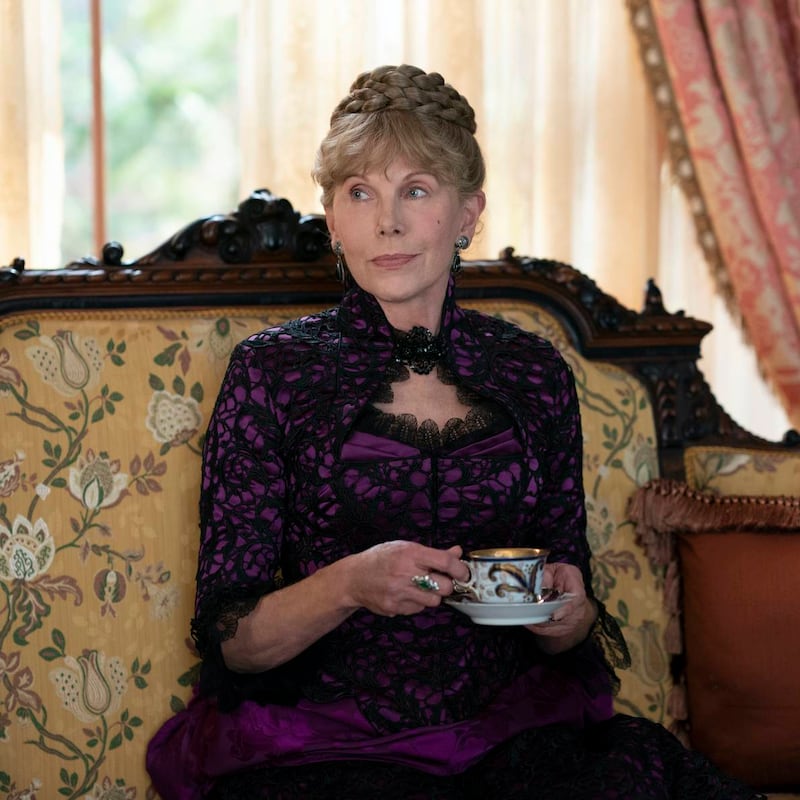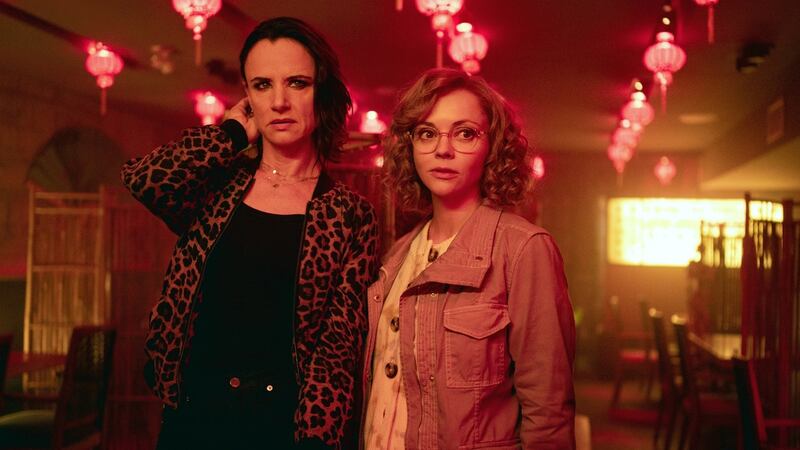What is “Julian Fellowes”? No-one really knows. Some say he is a man from the 19th century forever trying to return to that lost paradise. Others think that “Julian Fellowes” are simply fans of the Famous Five’s leader (I was a Timmy the Dog Fellow myself). Still more think “Julian Fellowes” is a pen-name for the entire House of Lords writing in a murmuration, like starlings.
One thing is for sure, when producers want to make something about haunted frocks, houses older than countries and the deep theology of silverware, Julian Fellowes is the entity they summon via telegram, ouija board or duck caller. Yes, Gosford Park, Downton Abbey, Belgravia, and now The Gilded Age, have all felt the febrile flow of Fellowes's fungible fancies.
The Gilded Age (Tuesday, Sky Atlantic) is his first show directly aimed at Americans, a people who have grown tired of their pretence of meritocracy and now crave the certainties of feudalism. His shows are usually arranged vertically around two sets of people: people with lots of space and nice real estate; and people who live under their house. Nowadays if you have people living under your house it's a real problem that can lead to subsidence but in the olden times, if Fellowes is to be believed, big houses with people in the underground bit constituted a perfect social order.
If I were a Julian Fellowes character, I would regularly stop writing now to say things like, 'This digital typesetting machine is truly a wonder!'
The Gilded Age is set in late 19th century New York, a milieu well documented by Edith Wharton and Henry James. "Ah," says you, "but did Wharton and James have characters gazing presciently at the oncoming future while frequently noting how the times are a changing?"
They did not. Fellowpian scripts are filled with people being aghast or amazed by new inventions and dogmatically certain of dubious things. If I were a Julian Fellowes character, I would regularly stop writing now to say things like, "This digital typesetting machine is truly a wonder!" or, "I'm not sure if I like this 'Instagram,'" or "I think I will leave my beloved party supplies in the safekeeping of this Mr Johnson. He seems like a trustworthy sort."
In fairness, there was a lot of change in the 19th century for a dramatist to sink his digital typesetting machine into: anti-colonial struggles, a rising working class, suffrage movements for women and black people. But these struggles are but sidenotes to Fellowes. For him, the greatest social issue of the age is the snobby way that the hereditary rich were treating the merely loaded. It’s an injustice that animates the Tory party to this day.
Fellowes, a progressive by 19th century standards, makes a strong case for representing all the different kinds of rich person in their full diversity. The gist of his argument: if you cut us, do we not also have the highest level of health insurance and a butler-powered Zeppelin to take us to hospital?

The Gilded Age features two of the best television actresses of the era. Carrie Coon plays the social-climbing wife of a railway magnate who dreams of a day when people aren't judged by who their family is but on how sickeningly rich they are. She absolutely burns with the injustice of being incredibly rich but not adored by all.
The rich of all kinds needed to be dressed and fed like toddlers, so there is a supporting cast of servants. Christine Baranski's butler is so supportive his name is Bannister
Meanwhile, Christine Baranski plays a doyenne of old New York whose job is to be appalled at Carrie Coon's attempts to infiltrate high society. She does this by remaining seated at all times but going full Baranski with clenched lips and raised eyebrows.
As you know, in those days the rich of all kinds needed to be dressed and fed like toddlers, so there is a supporting cast of servants who do these things without complaint. Christine Baranski’s butler is so supportive his name is Bannister.
There’s also a niece, Marian (Louisa Jacobson), who has to move in with Christine Baranski because she can’t afford a house. Most young Irish people should find this relatable. There’s also Peggy (Denee Benton), the only major black character, who ends up comforting and supporting Marian’s white fragility when the latter’s train ticket is stolen, despite the fact that she herself literally has to travel in a segregated carriage.
Later in the show Peggy and Marian bond over the fact they both have dreams of living fulfilled creative lives. It is implied that they have much in common. And, if you think about it, Peggy has to cope with life as a black person in a violently racist country and Marian must live with her rich aunt and use all the right cutlery, so they do have very similar problems.
Cynthia Nixon from Sex and the City, another fin de siècle New York drama about a cosseted white elite, is also here, playing a spare aunt. Is this a crossover? Well, it's about privileged New Yorkers obsessed with exclusive social codes in a time before Facebook so… probably?
If you think: 'That ballroom will make a good base for the workers' soviet after we dispose of the corpses,' you're probably better off with Yellowjackets
The dramatic high points of the first episode are: Carrie Coon's character hosts a party which the high society ladies boycott and Christine Baranski's niece attends that party without her aunt's permission. Look, these might be highest stakes you can cope with at this point in the pandemic. I won't judge. Furthermore, if you look at the big house and the flouncy frocks and think, "This is really making me think a lot about rich person's inhumanity to rich person," you will love The Gilded Age. However, if you think: "That ballroom will make a good base for the workers' soviet after we dispose of the corpses," you're probably better off with Yellowjackets (Now TV).

Ashley Lyle and Bart Nickerson's yarn about a football team of teenage girls who survive a mountain plane crash before slowly descending into feral barbarism is a schlocky rollercoaster of joy. It jumps between the mid-1990s disaster and the present day, where a much smaller group of survivors are being blackmailed over things they may or may not have done to survive. It's darkly funny, visually inventive and enjoyably disturbing with an amazing cast including the brilliantly understated Melanie Lynskey and the excellently overstated Christina Ricci.
If The Gilded Age had started by suggesting that Christine Baranski would end up chewing her neighbours as well as the scenery, I'd be far more excited about it. There's still time. Give cannibals a chance, Julian Fellowes! You can make sure they use the right silverware.












